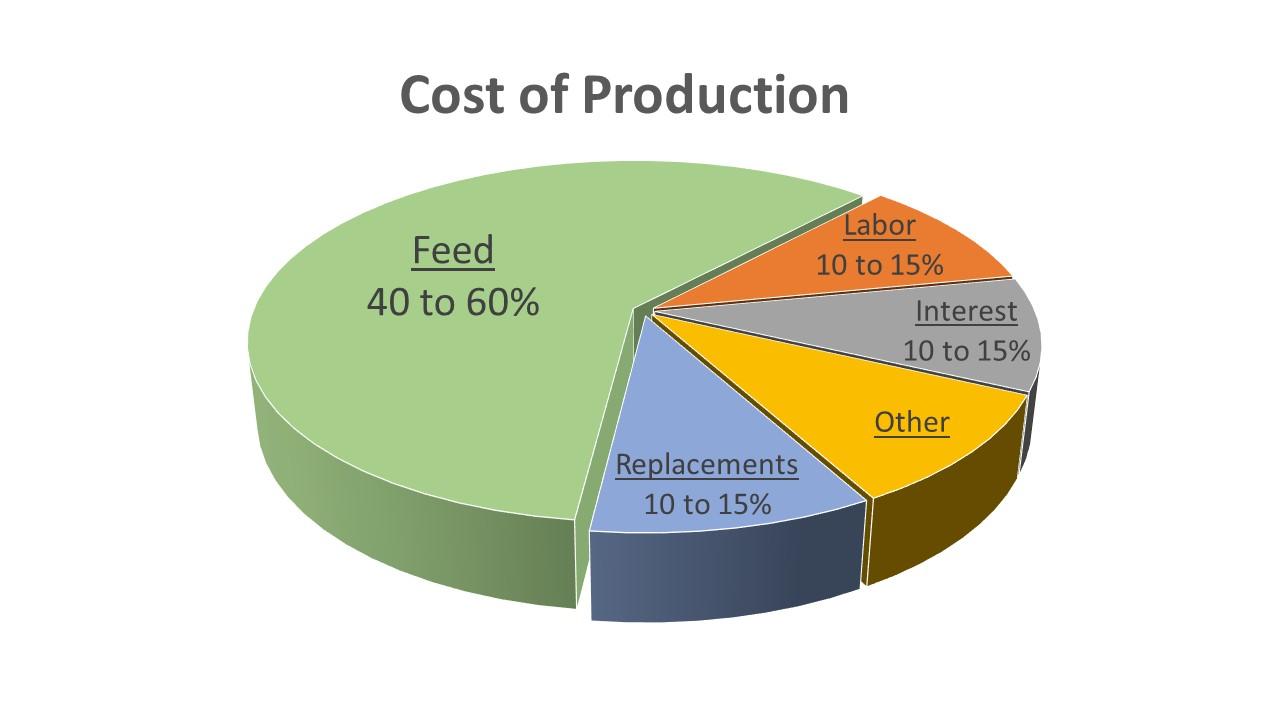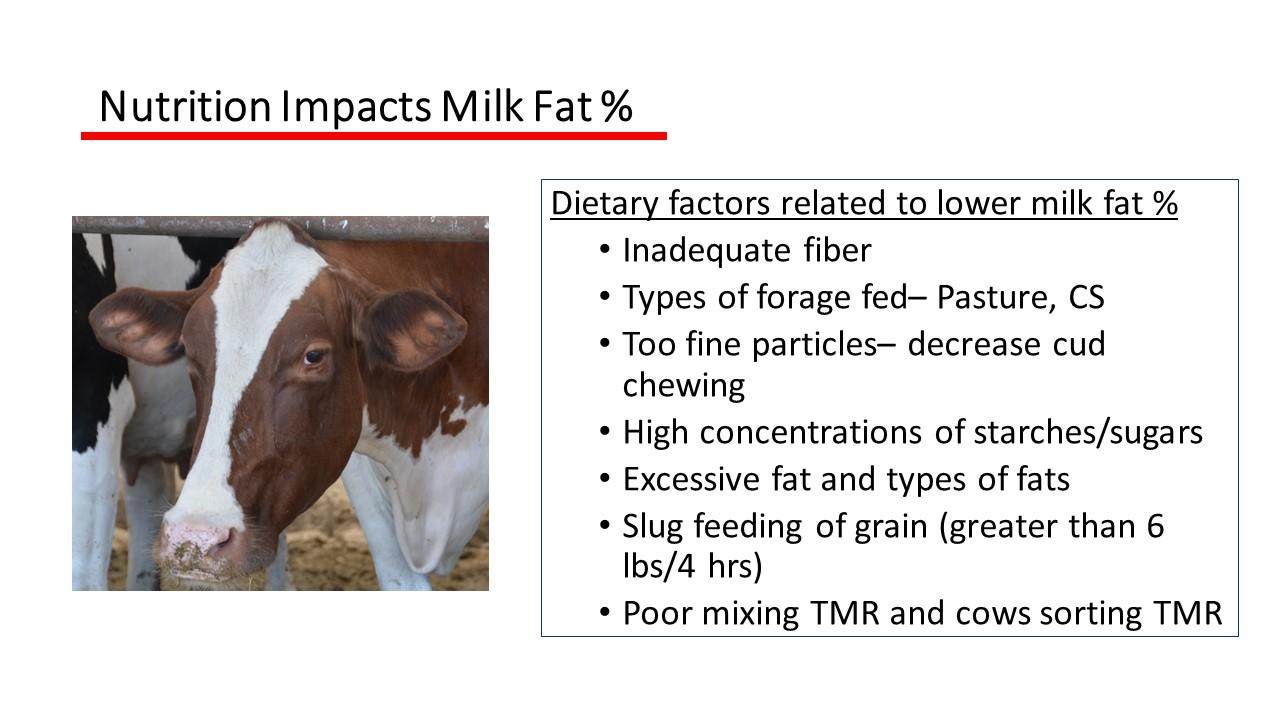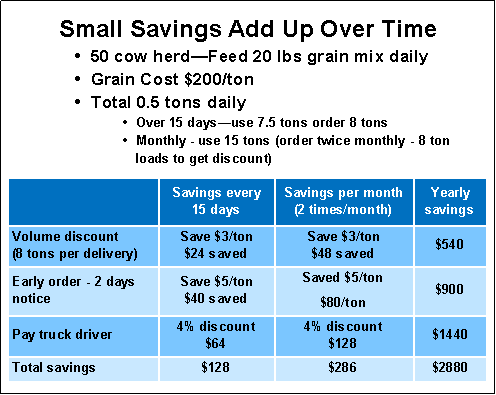Take Time to Review the Business Side of Your Dairy Operation
Take Time to Review the Business Side of Your Dairy Operation

Every business, including dairy businesses, needs to routinely ask the question, am I generating the most profit possible given the current market conditions? The more profitable dairy businesses come in a multitude of herd sizes and utilize a variety of management styles. However, some key economic components form the foundations of these more profitable herds. These components include, but are not limited to, optimizing a business’ gross income, efficiently using labor, land, and capital resources, and keeping costs in line. All of these economic components are interrelated as one alone does not generate the maximum profitability for any business. Besides identifying these key aspects, profitable dairy operations put into practice all of these aspects associated with a “more” profitable business model.
More Gross Income Per Cwt
Higher profit herds capitalize on receiving more income per cwt of milk shipped and more total income per cow. Higher production per cow does not guarantee profitability, but it does help pay bills, as long as the cost side of the equation is contained. In today’s milk markets, especially when supply management practices are in place, quality bonuses and butterfat percentage drive milk price per cwt, which in turn drives total milk income. Even in milk markets which do not receive bonuses for milk quality, cows give more milk when cell counts are lower, which adds income to the bottom line. For an example herd with 100 milking cows, decreasing the somatic cell count from 400,000 to 200,000 can increase daily milk production by 1.5 lbs per cow and increase herd income by $824/month or almost $10,000 per year. Improvements in butterfat percentage also can increase milk price per cwt and  the total herd milk income. A 2-tenth increase in butterfat percentage results in $978/month more milk income or $11,736 more yearly income for the 100 milking cow herd. The majority (85-95%) of a dairy’s income is from the sale of milk with the remaining 5 to 15% from the sale of dairy livestock for beef. Keeping death losses low (less than 7% of cows) and minimizing fresh cow issues helps improve cash flow and adds additional gross income.
the total herd milk income. A 2-tenth increase in butterfat percentage results in $978/month more milk income or $11,736 more yearly income for the 100 milking cow herd. The majority (85-95%) of a dairy’s income is from the sale of milk with the remaining 5 to 15% from the sale of dairy livestock for beef. Keeping death losses low (less than 7% of cows) and minimizing fresh cow issues helps improve cash flow and adds additional gross income.
Lower Feed Costs
Higher profit herds harvest/purchase higher quality forages, feed a higher percentage of forage relative to grain, and have lower total grain costs. For herds utilizing pasture as a forage source, rotationally grazing in a timely manner to ensure forage quality is important and adds income to the bottom line. With feed representing 50 to 60% of the total cost of producing milk, prudent use of feed dollars and savings are important to the bottom line. Reductions in grain cost can result from comparison shopping for the cheapest price at similar quality, taking advantage of discounts offered by the feed company (see illustration), or advance contracting to lock in grain costs to name just a few.
Often times, feed costs for heifers are included in the categories associated with forage production and purchase of concentrate feeds for the milking herd. Routine ration balancing for heifers allows one to target efficient use of feed dollars where the appropriate amount and type of grain and forage is fed. For example, feeding 2 lbs less grain per heifer for a month, when growth is not compromised, saves about $6/month or $150/month for a group of 25 heifers. The next question becomes, do you have an adequate but not excessive number of heifers needed to replace culled cows, keep the barn full, and maintain cash flow from month to month? Raising more heifers than needed costs dearly, but not having enough cows to fill the barn also is very costly.
Labor Efficiency
Labor costs represent 10 to 15% of the total cost for producing milk. Thus, using labor efficiently is one of the cornerstones of getting tasks completed in a timely manner, but also wisely using financial resources. Large variations exist in labor efficiency (pounds of milk marketed per employee). Another forgotten part of calculating labor efficiency is accounting for time of the owner and other family members. Marketing over 1.5 million pounds of milk per employee (1 employee = 2500 hr/yr) is found on more profitable herds. Herds are now at 2 million pounds of milk marketed per employee. Herds using tiestalls will have a slightly lower labor efficiency, whereas those using robots to milk their cows should be way above this labor efficiency benchmark, since the robot replaces employees milking cows.
Small Savings Add Up
With the extended lean financial times experienced in recent years, obvious areas to reduce expenses and restructuring of debts have been investigated and possible changes made. To further savings, one needs to capitalize on additional small savings of which savings compound over time. What may seem like only a small increase in income or savings, may mean the difference between cash flowing or not, especially during lean times. Small savings or increases in income from multiple sources, add together and have a positive impact on profitability of not only dairy business finances, but also your personal finances. From a personal standpoint, the example that is often offered is forgoing purchasing a $3.50 item 5 days a week results in a savings of $1277 yearly and at the end of 30 years is valued at over $85,000 (source: Wall Street Journal, June 2019). Just think what a few small savings can result in at the end of the year or over your dairy career.
The Bottom Line

The more profitable dairy businesses are able to produce milk at a reasonable cost of production. They realize they cannot just cut corners to save costs, but are able to economize when making purchases and take advantage of discounts afforded them. Facilities and management protocols are in place to get cows to milk to their genetic potential and are designed to efficiently use all labor, both hired and owner/family supplied. By realizing small savings throughout the dairy business, more potential dollars are available for cash flow within a dairy business. More profitable herds are always looking for ways to save a dollar—be it purchasing supplies together with neighbors or looking at non-traditional suppliers. Managing a dairy business needs to constantly change with the times to allow one to find new ways of doing things more cost effectively.
Author: Donna M. Amaral-Phillips
